Introduction
 confession to start. Two weeks into addressing a gap in my knowledge with a journey through the storied landscape of Ireland’s mythology (1), I was stunned by a lightbulb moment. Having attended previous classes at Queens University Belfast on diverse topics - including the origins of Ulster place and surnames, the six Celtic languages, Ulster’s archaeology from first settlers, Ireland's native trees - and after reading a couple of books by folklorist, travel writer and linguist Manchán Magan (2), that self-same dazzling light prompted me to try “joining up the dots.”
confession to start. Two weeks into addressing a gap in my knowledge with a journey through the storied landscape of Ireland’s mythology (1), I was stunned by a lightbulb moment. Having attended previous classes at Queens University Belfast on diverse topics - including the origins of Ulster place and surnames, the six Celtic languages, Ulster’s archaeology from first settlers, Ireland's native trees - and after reading a couple of books by folklorist, travel writer and linguist Manchán Magan (2), that self-same dazzling light prompted me to try “joining up the dots.”
To that end I'd like to focus on two of our mythology's four main cycles, the Mythological and the Ulster, and illustrating both with a story. Beforehand, this 21st century mac léinn (student, literally a son of learning) must examine the source material, our ancient manuscripts.
 ramatis personae include druids deities and high priests, kings and a queen, and tribes including one that sounds like a contemporary traditional music band, the Tuatha Dé Danann (3). The latter were an ancient race of gods who conquered and ruled Ireland long before humans (4). My brain-cells, dots or no dots, are being taxed from the outset.
ramatis personae include druids deities and high priests, kings and a queen, and tribes including one that sounds like a contemporary traditional music band, the Tuatha Dé Danann (3). The latter were an ancient race of gods who conquered and ruled Ireland long before humans (4). My brain-cells, dots or no dots, are being taxed from the outset.
 he Dé Danann’s arrival in Brú na Bóinne displaced their predecessors na Fir Bológa (strongmen of Mediterranean origin) to Connaught. They in turn were followed by the Milesians, regarded as ancestors of Ireland’s Celtic population. These Milesians defeated the Tuatha Dé sending them to live under fairy mounds (síthe) at Uisneach, a sacred place of assembly associated with the druids and the festival of Bealtaine (5). Next came Cúchalainn and the Craobh Rua (red branch) occupying the sacred stronghold Emain Macha (Navan Fort); with the Fianna (warriors) led by Fionn MacCumhaill completing the four Cycles. All in all, these groups constituted a veritable cacophony of activity covering many centuries before Saint Patrick’s arrival with Christianity in the fifth century AD.
he Dé Danann’s arrival in Brú na Bóinne displaced their predecessors na Fir Bológa (strongmen of Mediterranean origin) to Connaught. They in turn were followed by the Milesians, regarded as ancestors of Ireland’s Celtic population. These Milesians defeated the Tuatha Dé sending them to live under fairy mounds (síthe) at Uisneach, a sacred place of assembly associated with the druids and the festival of Bealtaine (5). Next came Cúchalainn and the Craobh Rua (red branch) occupying the sacred stronghold Emain Macha (Navan Fort); with the Fianna (warriors) led by Fionn MacCumhaill completing the four Cycles. All in all, these groups constituted a veritable cacophony of activity covering many centuries before Saint Patrick’s arrival with Christianity in the fifth century AD.
Manuscripts
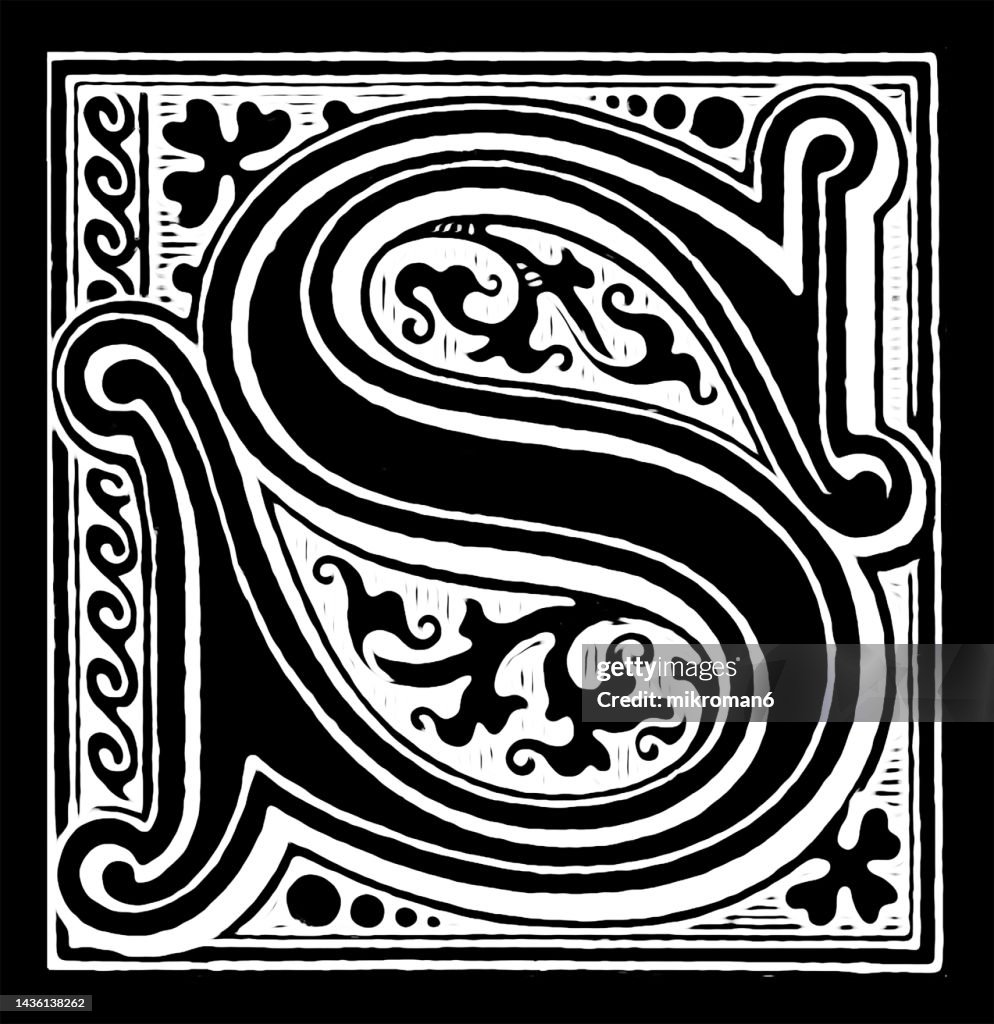 tories abound from the Children of Lir (the God of the Sea in Irish, Llyr in Welsh mythology), to the beautiful Deirdre of the Sorrows and her doomed romance with Naoise son of Úisliú (6), and leading to the epic of early Irish literature the Táin bó Cúailgne or Cattle raid of Cooley - to provide an introductory flavour of myths. Proof of the existence and survival of the fables that accompany the Cycles appears in narratives, recorded in ancient manuscripts with exceptional literacy and artistry by Christian monks from the 11th century onwards.
tories abound from the Children of Lir (the God of the Sea in Irish, Llyr in Welsh mythology), to the beautiful Deirdre of the Sorrows and her doomed romance with Naoise son of Úisliú (6), and leading to the epic of early Irish literature the Táin bó Cúailgne or Cattle raid of Cooley - to provide an introductory flavour of myths. Proof of the existence and survival of the fables that accompany the Cycles appears in narratives, recorded in ancient manuscripts with exceptional literacy and artistry by Christian monks from the 11th century onwards.
These sages had for the first time in human history written down stories that had been passed down through the centuries solely by word of mouth, providing insights into prehistoric eras of life in Ireland. To them we owe gratitude as custodians and scribes of our cultural heritage. The main manuscripts intrigue not least because of their titles - the Book of Invasions, the Book of the Dun Cow, the Book of Leinster and the Yellow Book of Lecan.
Serendipitously, it was recently reported (7) that Trinity College Dublin’s Medieval Studies Manuscript Research Project (8) had, by December 2023, digitised 60 documents or about 16,000 pages of text and artwork from its prized collection numbering 600 such manuscripts.
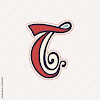 he digitised documents are now available to view. To quote one commentator, “the university’s collection of books and instruments has been brought to life through a dizzying array of projection mapping animations and immersive visuals (9).” In addition, the Book of Kells written in Latin about the Gospels can now be seen in animated film shown on a wraparound screen journeying to Ireland from the sacred Inner Hebridean island of Iona and its 6th century Abbey founded by the Irish Saint Columba (10). A trip to Dublin seems like an essential next step.
he digitised documents are now available to view. To quote one commentator, “the university’s collection of books and instruments has been brought to life through a dizzying array of projection mapping animations and immersive visuals (9).” In addition, the Book of Kells written in Latin about the Gospels can now be seen in animated film shown on a wraparound screen journeying to Ireland from the sacred Inner Hebridean island of Iona and its 6th century Abbey founded by the Irish Saint Columba (10). A trip to Dublin seems like an essential next step.
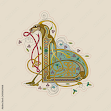 inguistically, the principal language adopted by the manuscripts’ scribes was Irish. The scale and survival of Trinity’s collection says something about the significance of fables both in and before the 11th century here (as well as today). It is a de facto recognition that narrative was - and remains - an art apart. As Oscar winner Cillian Murphy replied to a question about growing Booker and Oscar nominations for Irish authors and actors, "we have always been a nation of story-tellers."
inguistically, the principal language adopted by the manuscripts’ scribes was Irish. The scale and survival of Trinity’s collection says something about the significance of fables both in and before the 11th century here (as well as today). It is a de facto recognition that narrative was - and remains - an art apart. As Oscar winner Cillian Murphy replied to a question about growing Booker and Oscar nominations for Irish authors and actors, "we have always been a nation of story-tellers."
Whereas there are different ways to express stories - song, dance, art - in this essay we mean the oral telling and much later transfer to writing. In normal parlance, one would say insím scéal duit - I am telling you a story or - is scéalaí mise - I’m a storyteller. But legendary story-telling has always been an exalted activity, above the everyday. Hence, linguistic Irish has particular words for ancient wisdom. The compound word Seanchas means lore (the adjectival prefix sean meaning ancient), the art of story-telling. Specific terminology such as seanchaí (suggestive of a sage, saoi in Irish) is needed to describe “a custodian of tradition” or “a reciter of ancient lore.”
The special vocabulary elevates and transfers the oral art of story-telling across to written form. And that’s before even mentioning the flamboyance and effort devoted to the artistry of the Gaelic font and colours used to portray with emphasis the manuscripts’ ancient wisdom.
Furthermore, dinnseanchas translates as lore about places. The adjectival prefix dionn means eminent; as a noun, it means a fortified height. This lore includes fairy-mounds, holy wells, hill-forts, trees, ceremonial monuments. In recent centuries, it extends to the origins of place-names such as in townlands and geographical features which may also provide tantalising clues about their mythology.
Examples of locational intersections between mythology and archaeology are described eloquently by Manchán Magan (11). Our ancestors, he writes, were inspired by nature through myths and lore which have shaped a national identity that is embedded in the land. A theme in his analysis is that retaining connection with the natural world and place is crucial to our understanding of who we are. On 14 March 2024 he began a new documentary series on TG4 entitled Ag Triall ar an Tobar (in search for holy wells).
A propos linguistic subtleties, consider the manuscript titles taking two as examples. The Book of the Dun Cow or Lebor Na Huidre uses the word Lebor, in modern Irish leabhar (pronounced like the English word lore). Na Huidre (sounding phonetically like the English word heir) is the genitive Irish word oidhre, derived from the nominative odhar (12) (and pronounced in English phonetics as oar) meaning Dun Cow (greyish brown). Likewise the Book of Invasions, or Lebor Gabala Erenn, uses the words Leabhar (book) and Éireann (Ireland itself). Gabala stems from Gabhál, genitive gabhála - seizure, hence the Book of Invasions.
The Mythological Cycle - a story
The Book of Invasions lists all the ruling groups since the beginning of the world no less, as well as the battles they fought. The Tuatha Dé Danann, the people of the Goddess Danú, were the first such group. The quintessential story of their era is the legend about the Children of Lir.
 |
| The Children of Lir sculpture (1966) in the Garden of Remembrance Dublin |
|
|
|
|
A side-story which appeals, given my upbringing surrounded by music and instruments, centres on the high priest of the Tuatha Dé (plural of tuath, the people of Dia or God - The Chosen people). He was Danú’s father, The Dagda (meaning Good God) (13).
The Dagda could control the seasons using a magic harp called the Uaithne (modern Irish for a prop; or appropriately in music, meaning consonance; cruit is Irish for the small harp, cláirseach being the classical harp). To change the season he could play a certain chord. Made from native oak, the Uaithne was a powerful tool which he would take to battle, as its chords would exhort his men and ensure victory.
The Tuatha Dé Danann’s mortal enemies, the Formorians - described as a cruel people and led by Balor of the Evil Eye - plotted to steal the Uaithne. They would learn its secrets and bring it into battle, hoping to defeat the Tuatha Dé and rule Ireland. The violent Formorians broke into his lair and purloined his Uaithne. No matter how hard they tried, however, they simply could not get it to play. Any time they ran their fingers over its strings, all that resounded was silence .
When The Dagda noticed that his cherished harp was missing, he gathered a group of warriors to get it back. He called out to Uaithne and it sprang to life, flew through the air towards him, killing nine Fomorians (maybe collateral damage, says I). He grabbed his Uaithne and effortlessly played three chords. The first one made the Fomorians burst into tears and collapse in despair. The second made them erupt into laughter and toss their weapons aside. The final chord sent them into a slumber, allowing The Dagda and his men time to escape unharmed.
The three chords of Uaithne are Goltraí (slow sad music), Geantraí (happy lively music), Suantraí (a lullaby). Geantraí is, incidentally, the name of a traditional music programme broadcast by the television channel TG4.
To be accredited as a Master Musician in Ancient Ireland, the performer had to be able to induce the audience to weep, to dance and to snooze. Entertainments (the ancient equivalent of nights out on the town) began with sorrowful tunes, leading to lively tunes, the evening ending in tones designed to induce slumber - just like many’s a “trad” music seisiún today. A Dagda legacy is that the harp became and remains as Ireland’s national emblem.
Two postscripts. Apart being home to these ancient manuscripts Trinity College in Dublin also houses the 1400 AD “Brian Ború harp.” And a new BBC television documentary about the work of archaeo-musicologists on instruments including the harp and the music of Greek, Roman and Egyptian mythology is recommended for potential parallels and applicability to Ireland (14).
 |
"Brian Ború harp" TCD
|
The Ulster Cycle - a story
The central text of the Ulster Cycle is the Táin Bó Cúailgne story. It’s about a war declared by Connacht’s Queen Medb and her husband Ailill against the King of Ulster over wealth, the aim being to steal Ulster’s stud bull Donn Cúailnge. Because of a geis (a curse) on Ulster’s king and warriors, the role of combatant fell to Cúchulainn, the hound of Ulster (15). Kinsella’s translation from the Irish manuscript (16) describes Cúchulainn’s riastradh (old Irish for a “warp spasm”). Its graphic prose doesn't hold back:-
“malignant mists and spurts of fire flickered red in the vaprous clouds boiling above his head, so fierce was his fury”.….“tall & thick steady & strong rose up from the dead centre of his skull a straight spout of black blood darkly and magically smoking…..
“When that spasm had run though the high hero Cúchulainn he stepped into his chariot to find his enemies and killed 100, then 200, 300, 400, then stopped at 500…
“he threw up this circle round about the four great provinces of Ireland to stop them fleeing, he went into the middle of them and mowed down great ramparts of his enemies corpses
“this slaughter is one of the 3 uncountable slaughters on the Táin....
“In this great carnage of Muirthiemne Plain, Cúchulainn slew 130 kings, dogs and horses, women and children and rabble of all kinds, not one man in three escaped without his thigh bone or head being smashed and when the battle was over Cúchulainn left without a scratch on himself or his helpers or horses.”
Whoever the monk was, the author of this account (as translated by Kinsella), he knew eacatly how to compose a horror story and how to communicate it with enough drip-feed to petrify readers. The monastic scribe had a redoubtable literary technique and a polished nous in describing armageddon. In the aftermath of Irish successes at the aforementioned Oscars, were he around today he could well have become a Hollywood screeen-writing nominee.
Even allowing for my exclusion of much detail, the Táin's message is reminiscent of today’s wars, such as applying similar militaristic words like defence and slaughter. Seemingly 21st century leaders have learned no lessons from the past. In Irish the alliterative saying Filleann an feall ar an bhfeallaire fits; a French equivalent likewise - Plus ca change plus c'est la meme chose. Cúchulainn acts with apparent impunity, like a killing machine. His status as a “high hero,” or being so described by a Christian devotee, is debatable. Is this really a role model for Mother Ireland?
Two QUB academics (17) have scrutinised Kinsella’s account of Cúchulainn including his translation of the day after the Táin slaughter. Their analysis includes these descriptives supporting an important hypothesis:-
Cúchulainn’s hair, “brown at the base, blood-red in the middle, a crown of golden yellow, settled in 3 coils on the cleft at the back of his head…
“4 dimples on each cheek, yellow green crimson and blue, 7 bright pupils, eye jewels, each foot had 7 toes, each hand 7 fingers, breast broach of light gold & silver with gold inlays.... blinding brilliance.”
McCafferty and Baillie say that this account “leaves little doubt that people had seen a comet, close enough to make out the details.” Most of these elements are impossible, they argue, if you try to make Cúchulainn into a human hero; conversely, all the elements be they coloured dimples or blindingly bright jewels could be explained as interpretations of a close comet and its coma. They describe comets as “hairy stars with dust tails appearing as long hair streaming behind.”
Their book presents this image of Donati’s 1858 Comet:-
In further support, the QUB experts refer to Cúchulainn’s final encounter - his combat with Ferdia - quoting, among other passages, this gory piece:-
“Cúchulainn warped into his fury spasm. He blew up and swelled like a bladder full of breath and bent himself in a fearful hideous arch, mottled and terrifying, and the huge high hero loomed straight up over Ferdia, vast as a Formorian giant.”
McCafferty and Baillie describe the blood-curdling encounter with Ferdia sticking his sword inside Cúchulainn, “turning the ford crimson with his battle gore;” and Cúchulainn attacking Ferdia with his gae bolga, a spear that (wait for it) opens its 30 barbs inside the body, killing him. Is the scribe justifying the use of lethal weapons to defend something or somebody?
To reconnect with the linguistic sub-plot and the adjective bolga, the Mythological Cycle’s first-recorded battle pitched the Tuatha Dé Danann against na Fir Bológa, aka the Fir Bolgs, barrel-chested men from Spain or Greece. These Fir Bolgs somehow conjure up modern images of Irish rugby's super-fit prop forwards. Bolga is the same Irish adjective as bológ, now used to describe the spear, gae, as it was with the burly men, fir. Spear in today’s Irish is ga. Bológ means a strong heavily-built man; it also means a bullock.
The QUB authors’ interpretation continues in support of the Comet thesis thus:-
The imagery of “two blazing torches,” “gift-scatterers” and “a fearful hideous arch” sit comfortably with the comet hypothesis as does the turning of water red; and
“When the comet is far away Cúchulainn is not heard of and peace reigns in Ireland. When the comet is near earth Cúchulainn and the others get up to all sorts of supernatural shenanigans.”
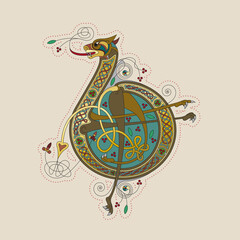 y chance I found a musical parallel between this bellicosity and The Dagda story. It might, however slightly, alleviate distressing impressions left from Cúchulainn’s combative fury. An authoritative musicologist has reported that the original title of the anthemic and haunting Londonderry Air (O Danny Boy) was “Eimear’s Farewell to Cúchulainn, (18)” his sometime wife (but that’s another story). An age-old question occurs - could Eimear be the “anon” composer of Ulster’s most beloved ballad ever?
y chance I found a musical parallel between this bellicosity and The Dagda story. It might, however slightly, alleviate distressing impressions left from Cúchulainn’s combative fury. An authoritative musicologist has reported that the original title of the anthemic and haunting Londonderry Air (O Danny Boy) was “Eimear’s Farewell to Cúchulainn, (18)” his sometime wife (but that’s another story). An age-old question occurs - could Eimear be the “anon” composer of Ulster’s most beloved ballad ever?
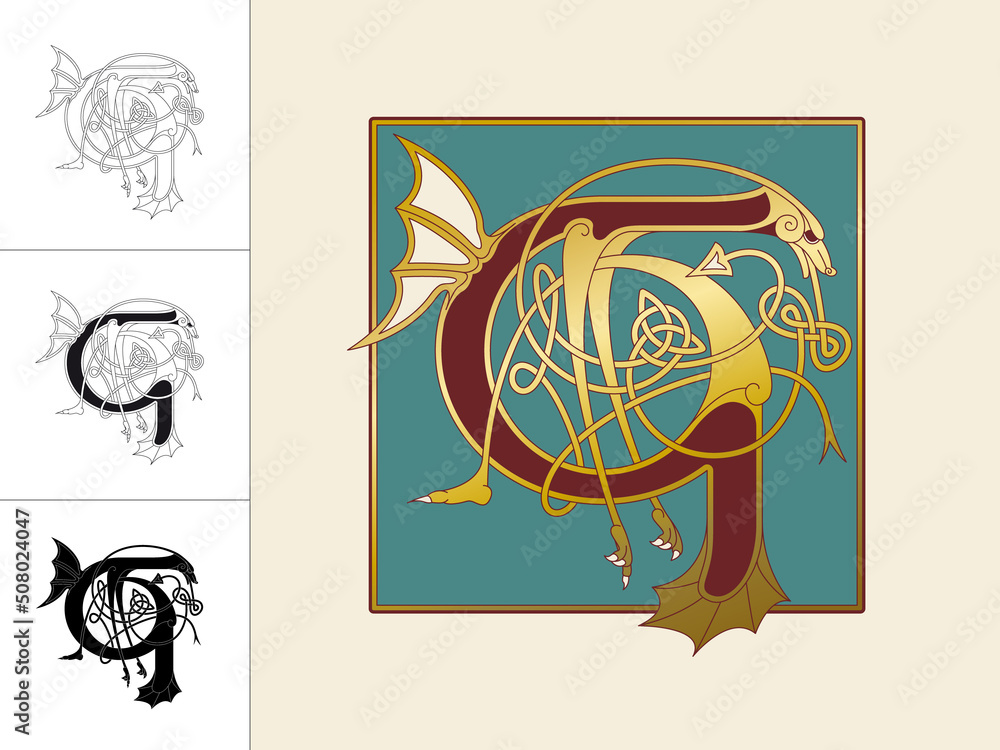 iven that our ancient predecessors lived in harmony with nature (unlike ourselves) (19), equally aware of the planets, their design accuracy of monuments is uncanny. Long long ago - some 5,200 years to be more precise - the mid-Neolithic builders of Newgrange constructed a roof box over the passage entrance. On winter solstice the rising sun sends in a shaft of light that penetrates 19 metres hitting the triple spiral motif in the back burial chamber (20) to open the vortex into “the other world” for the dead. In addition, those neolithic builders were suffieciently skilled and knowledgeable to line up Newgrange and other monuments across Ireland to the central point of Uisneach.
iven that our ancient predecessors lived in harmony with nature (unlike ourselves) (19), equally aware of the planets, their design accuracy of monuments is uncanny. Long long ago - some 5,200 years to be more precise - the mid-Neolithic builders of Newgrange constructed a roof box over the passage entrance. On winter solstice the rising sun sends in a shaft of light that penetrates 19 metres hitting the triple spiral motif in the back burial chamber (20) to open the vortex into “the other world” for the dead. In addition, those neolithic builders were suffieciently skilled and knowledgeable to line up Newgrange and other monuments across Ireland to the central point of Uisneach.
These facts adds veracity to claims about residents of this little island, Ireland's ancients, as observers of and influenced by celestial events. Fadó fadó. While avoiding any temptation to sound far-fetched - and taking the surreptitious opportunity to add the Aurora Borealis - those stellar apparitions might indeed include Cúchulainn and other such passing comets.
Passing comments
 any of the legendary invasions are said to be based on actual historical events. In which case real time must be relevant. The Milesians, for instance, the group which ruled Ireland after the Tuatha Dé Danann and are regarded as Celts, the Gaelic people are said to have invaded around the first century BCE (21). According to the Ulster Cycle Cúchulainn’s death aged 27 is reported in the Annals of Tighernach (Tiarna meaning Lord) to have occurred in 39AD (22).
any of the legendary invasions are said to be based on actual historical events. In which case real time must be relevant. The Milesians, for instance, the group which ruled Ireland after the Tuatha Dé Danann and are regarded as Celts, the Gaelic people are said to have invaded around the first century BCE (21). According to the Ulster Cycle Cúchulainn’s death aged 27 is reported in the Annals of Tighernach (Tiarna meaning Lord) to have occurred in 39AD (22).
The archaeologist Ruairí Ó Baoill (23) points to evidence of Ireland’s first settlers existing at Mount Sandel near Coleraine. Excavation indicates occupation dating from the mesolithic period. "Their sturdy huts represent the only definite mesolithic houses discovered in Ireland." Flint tools have been unearthed, indicating that Stone Age hunters camped there to fish salmon in the weir. It shows that Mountsandel Wood is the earliest known human settlement in Ireland (24) dating to between 7600 and 7900BC.
Without taking legend literally on timescale, thoughts occur about reconciling histories of the first century BCE Milesians and maybe even the first century AD Cúchulainn with archaeological evidence. The Mountsandel settlers would have been living here seven millennia before those early Celts were born or before the disguised (or metaphorical) Cúchulainn soared high.
This mythical journey has a way to go if I’m ever going to be able to replicate the artistry of my ancestors and join up dots.

©Michael McSorley 2024
References
1. "A Journey through Irish Myths and Legends" Janice Witherspoon Queen's University Belfast 10 week course
2. Talk at Black Box Belfast 18 March 2024 https://imaginebelfast.com/event/manchan-magan-listening-to-the-land/
3. In concert at Ulster Hall Belfast Tradfest 16 March 2024
https://www.ulsterhall.co.uk/what-s-on/frankie-gavin-d%C3%A9-dannan/
4. Encyclopedia Britannica
5. www.irisharchaeology.ie Mayday and the Celtic festival of Bealtaine
6. https://www.irishcentral.com/roots/legendary-deirdre-sorrows?
fbclid=IwAR1LSjrvHm_Hy7M33zc-BpPHIVMP4zKTvXe1-uG8kkKqEsTr9k5i2Mu7mFI_aem_AZh1C-Ns4vE_
BNSUqtQp0E0WpnOvFxDAylikntp-sPJhnYuJQO9XxvkA2jcpey3C1zk
7. Irish Times The Ticket 2 December 2023 “Down to the Finest Detail” Henrietta McKervey
8. https://digitalcollections.tcd.ie/catalog
9. Irish Times The Ticket 20 January 2024 Una Mullally
10. RTÉ News 16 January 2024 https://www.facebook.com/rtenews/videos/6954537057993222
11. Manchán Magan "Listen to the Land Speak" 2022
12. www.focloir.ie https://www.teanglann.ie/en/fgb/odhar
13. https://www.museum.ie/en-IE/Collections-Research/Irish-Antiquities-Division-Collections/Irish-Antiquities-Articles/
The-Winter-solstice-at-Newgrange
14. BBC4 4 Mar 2024 “Discovering the Music of Antiquity. The search for period instruments”
15. Reflected in the modern surname MacConUladh McCullagh - son of a hound of Ulster
16. The Táin Translated from the Irish Epic Tain bó Cuailnge Thomas Kinsella 1969
17. "The Celtic Gods Comets in Irish Mythology" Patrick McCafferty & Mike Baillie. TempusPublishing 2005
18. BBC Radio3 Invitation Concert 29 February 2024 D Byers Programme Notes C.V Stanford Irish Rhapsody no.1
19. BBC News 8 March 2024 Lough Neagh: toxic algae potentially waking again
20. https://www.museum.ie/en-IE/Collections-Research/Irish-Antiquities-Division-Collections/Irish-Antiquities-Articles/
The-Winter-solstice-at-Newgrange
21. https://www.encyclopedia.com/history/encyclopedias-almanacs-transcripts-and-maps/lir
22. "The Celtic Gods Comets in Irish Mythology" Patrick McCafferty & Mike Baillie 2005
23. The Archaeology of Ulster: from first colonists to modern times Ruairí ó Baoill QUB O/L Jan-Mar 2020
24. P C Woodman 2015 "Ireland’s First Settlers. Time and the Mesolithic" Oxbow Books











